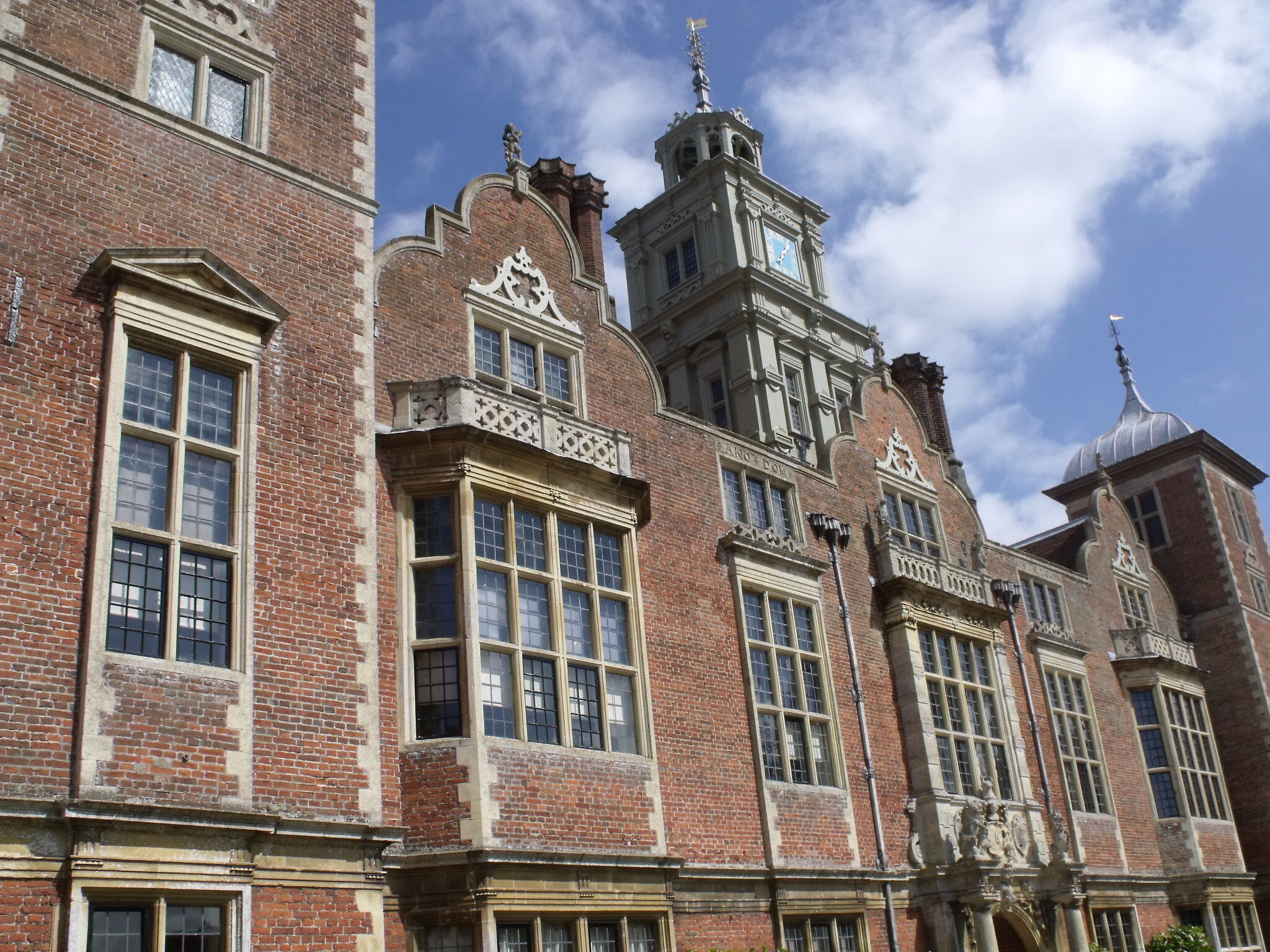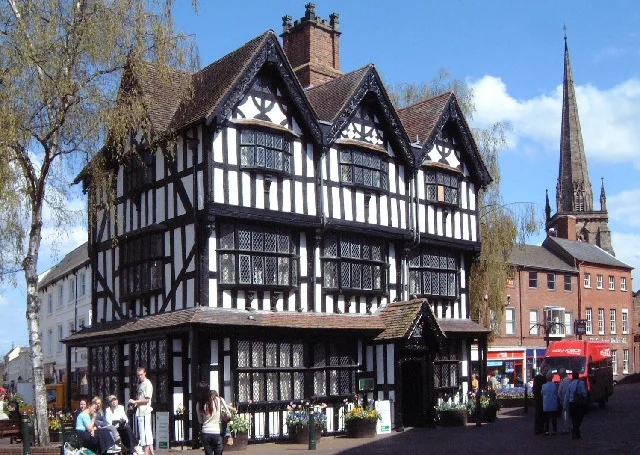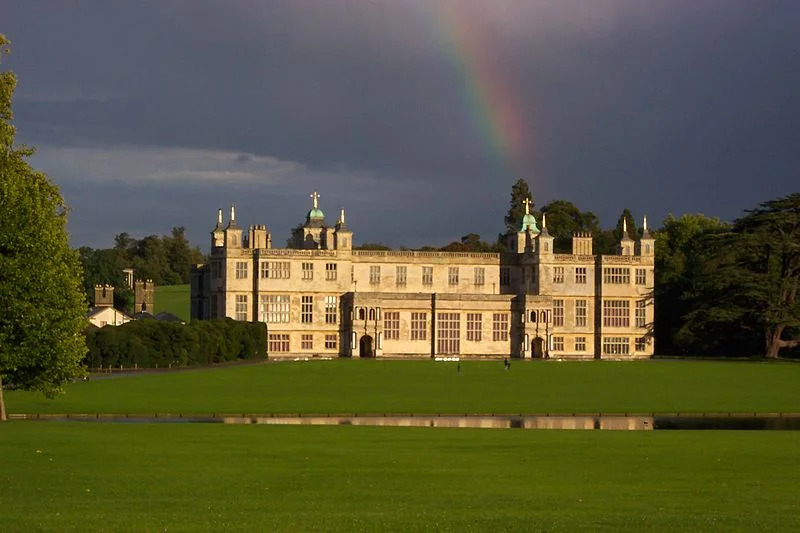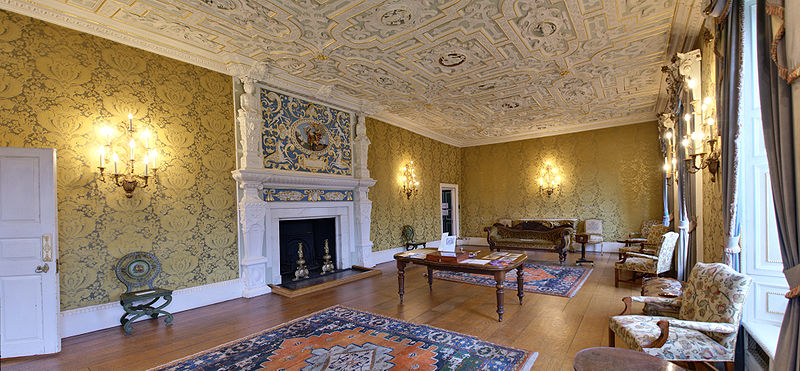An Exploration of Jacobean Era Architecture
When thinking of Jacobean era architecture, most think of Shakespearean theatre and the way in which his plays illustrated the architecture of the period. Because of his plays, you can picture the popular design elements during the period such as: the gables, turrets, flat roofs, window bays with mullioned windows, and extruded corners. You can also imagine the grand and elaborately sculpted staircases, the use of classical orders as an imposed ornamentation, and the interior design choices that included fireplaces, materials like mother of pearl, and featured furniture in increasingly rich colours and details. Below are some examples of the architecture of the period.
1. Castle Bromwich Hall - Castle Bromwich, West Midlands County, England
image © Wiki Commons
Built in 1599 by Sir Edward Devereux, Castle Bromwich Hall is a Jacobean mansion that was continously built upon from 1599 until 1710 when Sir John Bridgeman II extended the Hall and rebuilt it in local hand-made bricks of clay. The area has become a tourist attraction due to the architectural styling of the home, as well as the Castle Bromwich Hall Gardens which are the only suriving gardens that exemplify the 18th-century English formal garden.
2. The Black and White House Museum (formerly The Old House, Hereford) - High Town, Hereford, England
image © Wiki Commons
The Black and White House Museum (formerly known as The Old House, Hereford) was built in 1621 as part of Butchers' Row. Presently, it is the only original house remaining in the row with more modern buildings surrounding it.
In 1929, the Old House became a museum highlighting the lifestyle of Jacobean times. The interior is furnished in the style of the period and remains as a museum that can be visited today.
3. Crewe Hall - Crewe Green, Cheshire, England
image © Wiki Commons
The Crewe Hall was built in 1615-36 by an unknown architect, however, there is speculation it was the work of Inigo Jones. In 1866 a fire erupted and forced the hall to undergo extensive restoration. Despite the restoration needed, the interior continued to include Jacobean influence through the wood carving, chimney pieces, and plaster work.
Throughout the numerous shifts in ownership, the house remained primarily Jacobean. It contains a mixture of original Jacobean work, as well as reproductions of the original Jacobean designs.
Today the house has become a hotel with numerous amenities for guests such as conference rooms, tennis courts, spas, and gyms. Unless you're planning a wedding ceremony, the hall and park are not open to the public.
Audley End - Essex
image © Wiki Commons
Once known as the archetypical Jacobean house, the Audley End house in Essex was built by the Earl of Suffolk with his Uncle. It is presently one-third of its original size as the main front court was demolished in 1708 and the east wing was demolished in 1753. The home is available for visiting and tours can be booked to explore the architectural elements.
Bonus: Look at the interiors
The Jacobean State Drawing Room of Boston Manor House
image © P.G. Champion
A major part of the Jacobean era was the interior design. Materials such as wood and mother of pearls were used to decorate rooms while marine motifs were prominent for design. As seen in the image above, the room has an ornate ceiling and the carving featured above the mantel draws in the marine motif. While adornments became simpler, furniture shifted to being bigger, more sturdy, and ultimately more comfortable with the use of padded upholstery.
Blickling Hall - North Norfolk
image © Flickr
Blickling Hall is a Jacobean manor that was built for Sir Henry Hobart. It eventually came into the possession of the Boleyn Family and since changed ownership. Today you can go on tours of the home and if you're lucky - you may even see a ghost! Blickling Hall has become less known for its architecture and more well known for the legend that three ghosts patrol the halls - with the famous Anne Boleyn being one of them.
cover image © Flickr



























